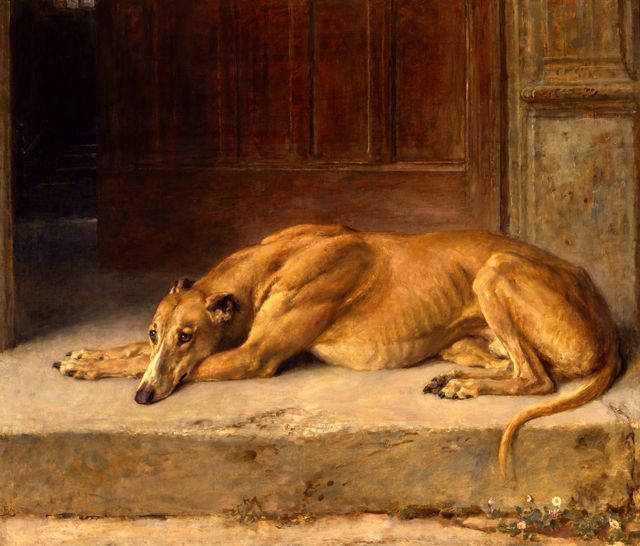My favourite painting: Rose Paterson
Rose Paterson chooses her favourite painting for Country Life.


St George and the Dragon, 1502, by Vittore Carpaccio (1460/5–1523/26), 56in by 140in, Scuola di San Giorgio degli Schiavoni, Venice, Italy. Bridgeman Images.
Rose Paterson says: ‘I intended to be a racehorse trainer, but a winter in Venice, and in particular Carpaccio’s enchanting paintings, led me astray. Thanks to him, I spent the next 20 years at Sotheby’s instead. Much later, annual trips to Croatia reminded me why I loved Carpaccio’s paintings all over again. St George and the Dragon is properly Gothic. I love the melodrama of the broken lance, the juddering impact of dragon versus horse and the rather unseemly relish with which Carpaccio depicts dismembered corpses, skulls and bones, while cutely reminding us of his fashionable foreshortening skills and interest in exotic architecture'
Rose Paterson is the first woman Chairman of Aintree Racecourse, which hosts the Grand National this weekend.
John McEwen comments: The Scuola di San Giorgio degli Schiavoni was the guildhall of the Dalmatians (Slavs) in Venice, a kind of seaman’s institute. The Venetian scuole were the equivalent of London’s livery companies. Charity was their common aim, but the scuole were more religious in their rituals. The Dalmatians found no native artist up to scratch, so they commissioned the Venetian Carpaccio—at the peak of his career and fresh from painting a series on St Ursula for another Venetian scuola.
Three of the nine San Giorgio pictures are devoted to St George, one of Dalmatia’s patron saints. The legend was that George, on his knightly travels, came across a Libyan city in thrall to a monstrous dragon. The citizens had tried to placate the dragon by submitting sacrificial victims, first animals, then humans. George’s timely arrival saved the king’s daughter, Princess Cleodolinda (or Sabra), from this gruesome end, indicated in the picture by the strewn bits and pieces of previous human victims. he galloped to her rescue and, when he made the sign of the cross, the dragon submitted to his spear.
Jan Morris, who chose a gentler picture from the series for us, recently made Carpaccio the subject of her final book, Ciao, Carpaccio!. It is dedicated to harry’s Bar, where ‘beef carpaccio’ and its variants were invented in the 1960s, giving the artist a new claim to fame.
St George was adopted as patron saint of england by Edward III (1312–77), but, in 1969, the Catholic Church finally decided he was too mythological and deprived him of bona-fide saintly status.
Exquisite houses, the beauty of Nature, and how to get the most from your life, straight to your inbox.
This article was originally published in Country Life, April 8, 2015
More from the My Favourite Painting Series

My favourite painting: Baroness Trumpington
Baroness Trumpington chooses her favourite painting for Country Life.

My favourite painting: Steve Dean
Steve Dean chooses his favourite painting for Country Life.
Country Life is unlike any other magazine: the only glossy weekly on the newsstand and the only magazine that has been guest-edited by His Majesty The King not once, but twice. It is a celebration of modern rural life and all its diverse joys and pleasures — that was first published in Queen Victoria's Diamond Jubilee year. Our eclectic mixture of witty and informative content — from the most up-to-date property news and commentary and a coveted glimpse inside some of the UK's best houses and gardens, to gardening, the arts and interior design, written by experts in their field — still cannot be found in print or online, anywhere else.
